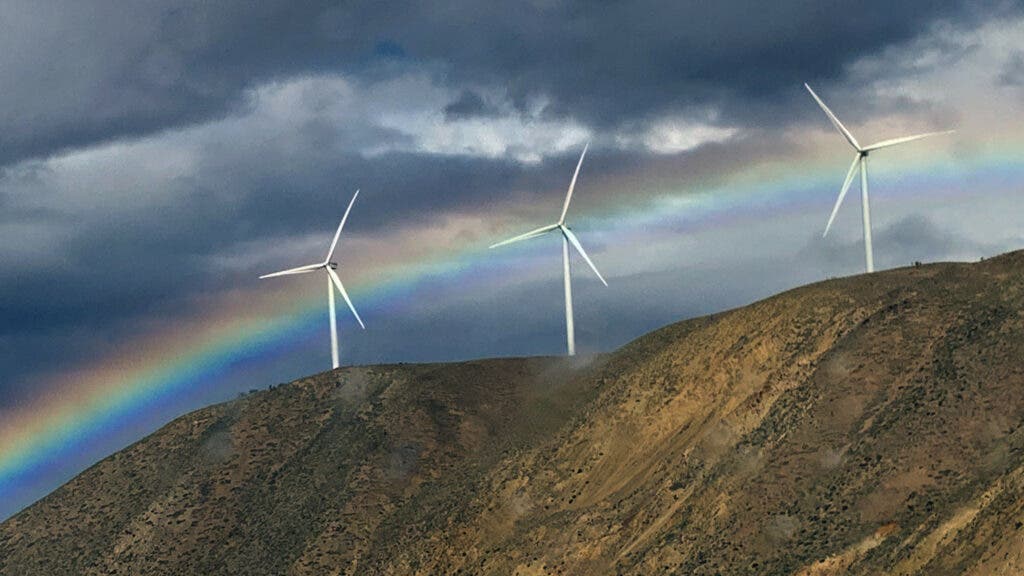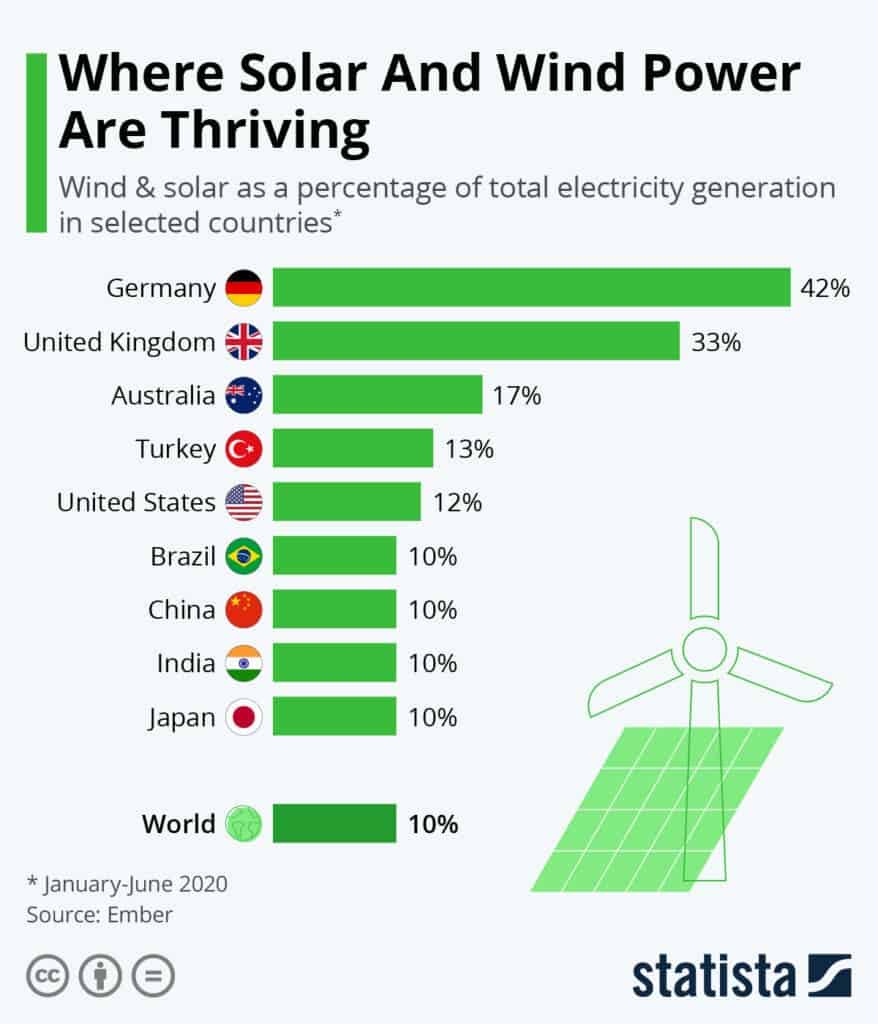Wind and solar have doubled their share of global electricity generation since the Paris Climate Agreement was signed in 2015, reaching almost 10% in the first half of the year, according to a new report.
Nevertheless, it’s still not yet enough to meet the climate targets and sustained action is needed further on.

The energy consultancy Ember looked at 48 countries that make up more than 80% of the global electricity production. Wind and solar generation rose by 14% in the first half of the year, compared to the same period in 2019, according to the report.
In total, both energy sources explained 9.8% of the electricity generation.
Renewable has become a big player
Many major countries now generate around a tenth of their electricity from wind and solar, the report showed. This includes China (10%), the US (12%), India (10%), Japan (10%), Brazil (10%), and Turkey (13%). The EU and UK were substantially higher with 21% and 33% respectively. Within the EU, Germany rose to an impressive 42%, nearing a tipping point where half of its energy would be renewable.
But other countries are lagging behind the global average: Canada’s share has barely changed since 2015. South Korea’s share has been increasing, but at 4% is still less than half the global average, and Vietnam is making up for lost time increasing from 0.2% in 2018 to 6.4% in the first half of 2020.
The pandemic barely impacted solar and wind generation, the report showed. Nevertheless, COVID-19 has impacted the rate of new renewables installed this year, slowing it down significantly. A forecast by the International Energy Agency predicts a 13% decrease in the installation of renewable energy in 2020. Stimulus packages focusing on a clean transition can help that bounce back.

While solar and wind generation largely expanded, coal generation is also decreasing, the report showed, dropping 8.3% in the first half of the year. This breaks a new record, following on from a year-on-year fall of 3% in 2019.
For the first time, coal plants were needed for less than half the time. Coal
generation fell by almost 9%, but coal capacity fell only 0.1%. That means
the utilization of coal plants has fallen to 47% in the first half of 2020, from 51% utilization in 2019.
However, it’s not just the world’s transition to renewable energy that can explain that. Renewables definitely play a role, but there’s also by the drop in electricity demand amid the Covid-19.
India has seen remarkable results, with wind and solar moving from having 3% of the market share in 2015 to 10% in the first half of the year. At the same time, coal’s share fell from 77% to 68%. In China, coal’s share fell from 68% to 62%, while in the US coal’s market share was reduced by 17% as natural gas expanded.
Despite this rapid change, it’s still not enough to limit global temperature rises to 1.5 degrees Celsius, a goal mentioned in the Paris Agreement. The IPPC, a global group of climate experts, estimated coal use needs to fall by about 79% by 2030 from 2019, a fall of 13% every year throughout the 2020s. So while there are encouraging signs, we’re still not on track for climate stability.
“It’s clear that even with the rapid trajectory from coal to wind and solar over the last five years, progress is so far insufficient to limit coal generation in line with 1.5-degree scenarios,” the researchers wrote in the report, calling for further expansion of renewable energy sources.









